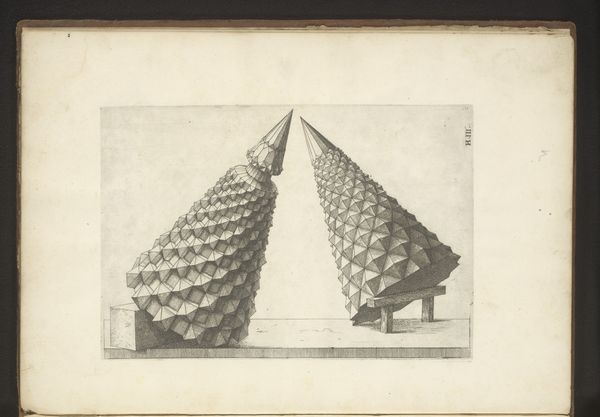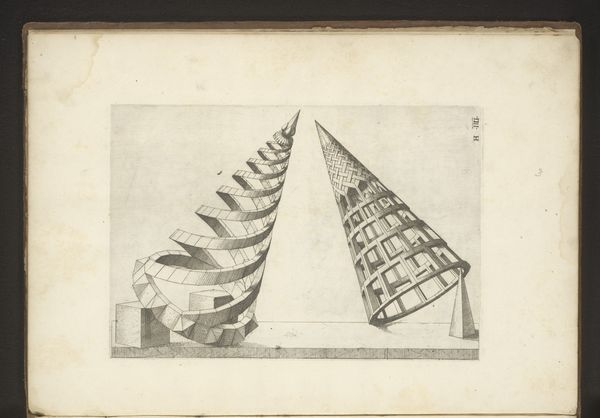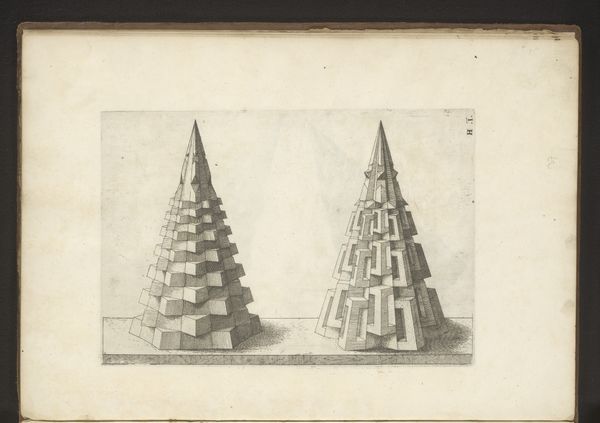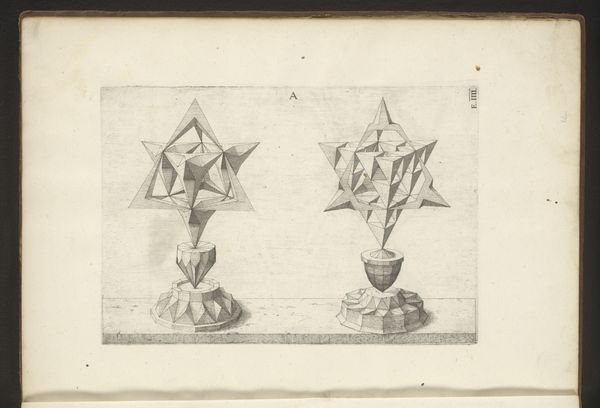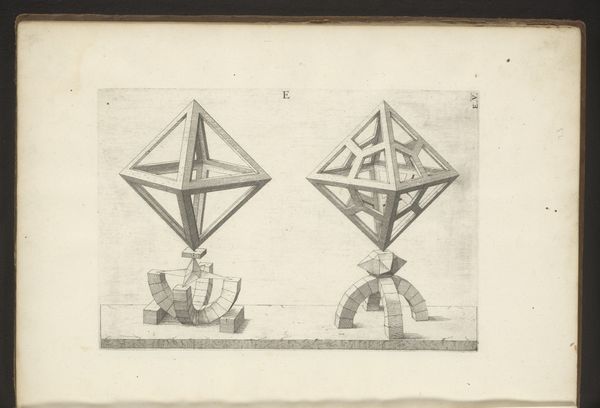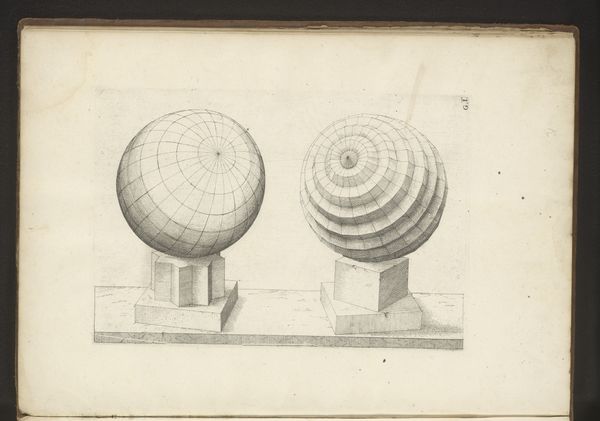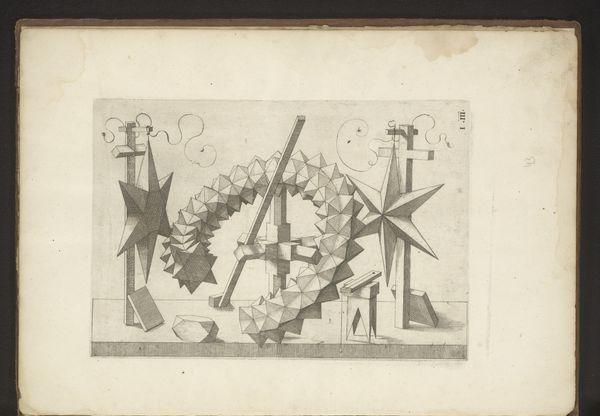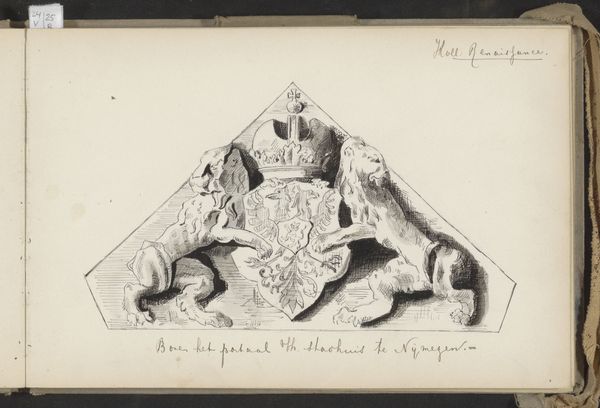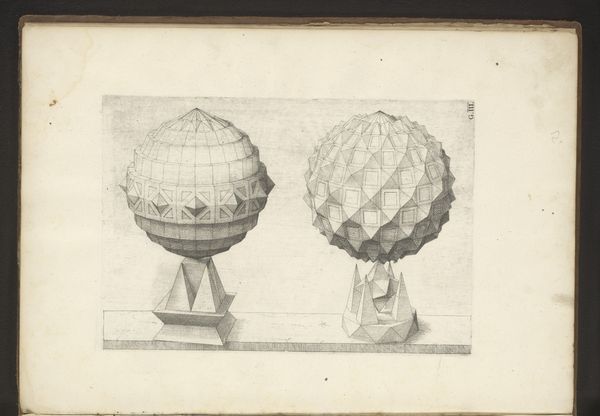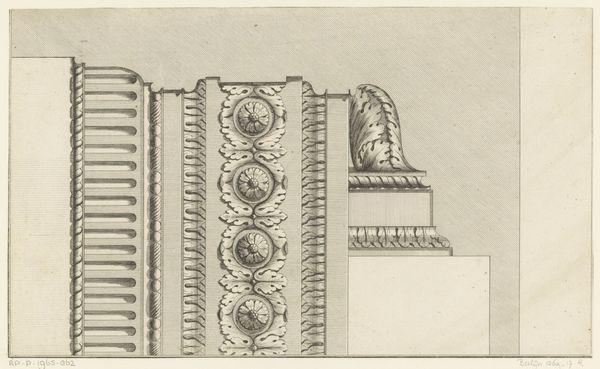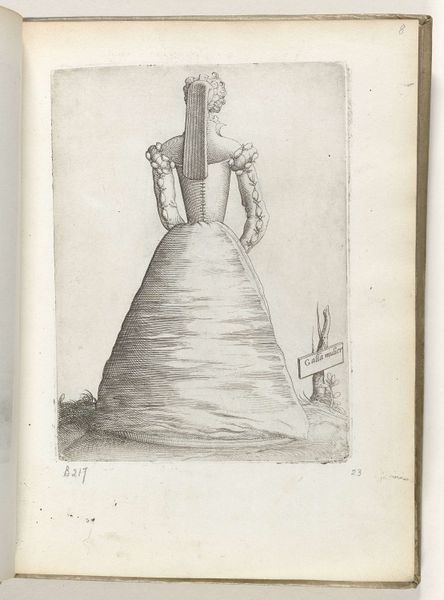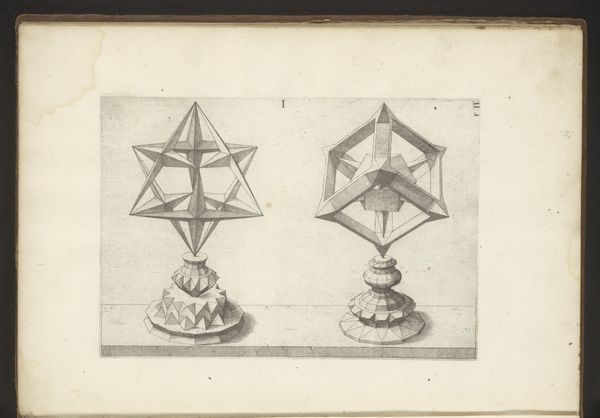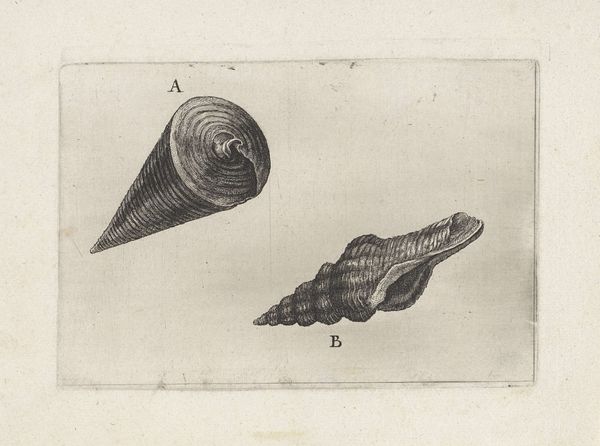
drawing, print, graphite, engraving
#
drawing
# print
#
form
#
11_renaissance
#
coloured pencil
#
geometric
#
line
#
graphite
#
northern-renaissance
#
engraving
Dimensions: height 260 mm, width 178 mm
Copyright: Rijks Museum: Open Domain
Editor: So here we have Jost Amman's "Two Polyhedrons with a Cone as a Starting Point", from 1568, currently held at the Rijksmuseum. It's a drawing or print – perhaps an engraving? The precision is astounding, yet they’re such bizarre, almost alien forms. How do you interpret this work, considering its context? Curator: Well, given that Amman was working during the Renaissance, when there was a renewed interest in classical knowledge and mathematical principles, this image speaks volumes about the cultural preoccupations of the time. Consider the status of knowledge itself in 16th century Europe, and how the elite signaled status through association with mathematical arts. Editor: Status? It's just geometry, isn’t it? Curator: Not quite. These polyhedra, though abstract, reference a very specific kind of knowledge only available to a privileged few. The ability to understand, visualize, and represent these forms demonstrated one’s understanding of the natural world – and implicitly their right to influence it. What's interesting is the way images like this circulated in print, becoming a key component in solidifying the visual language of power and patronage. Notice how that language connects the court and the burgeoning merchant class? Editor: Oh, so it's less about pure geometry and more about... who has access to it? The image itself becomes a social symbol? Curator: Precisely. The image functions as a symbol of that intellectual authority. It reflects and reinforces existing social hierarchies by visually encoding who belongs and who doesn’t within a very specific social arena of the learned elite. Editor: That's fascinating. I'd never considered geometry having that kind of power. I guess I'll have to look at mathematical diagrams in a whole new light now! Curator: Indeed, this has highlighted how visual and mathematical concepts interact with cultural institutions, framing power dynamics in art during the Renaissance era.
Comments
No comments
Be the first to comment and join the conversation on the ultimate creative platform.
